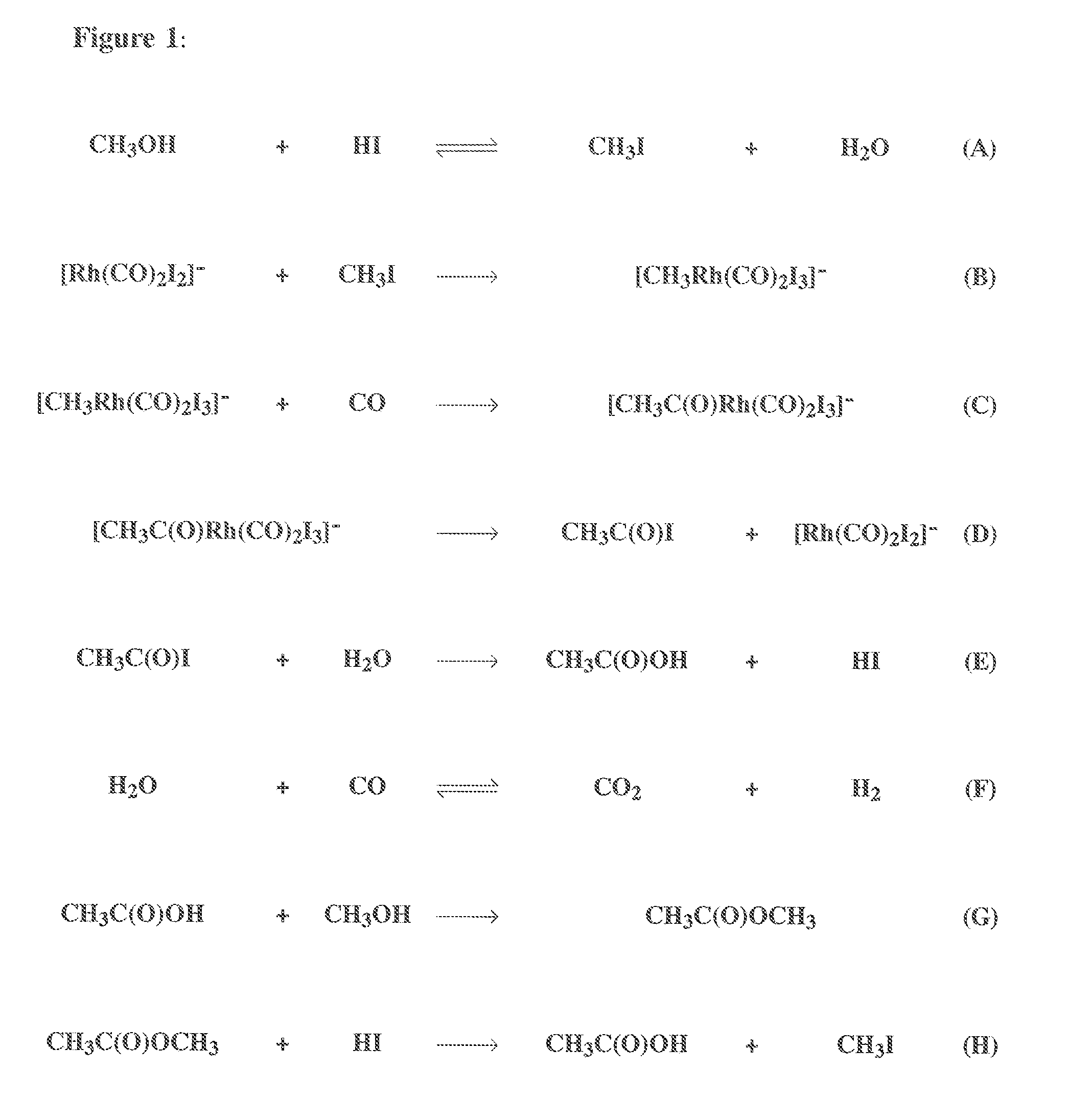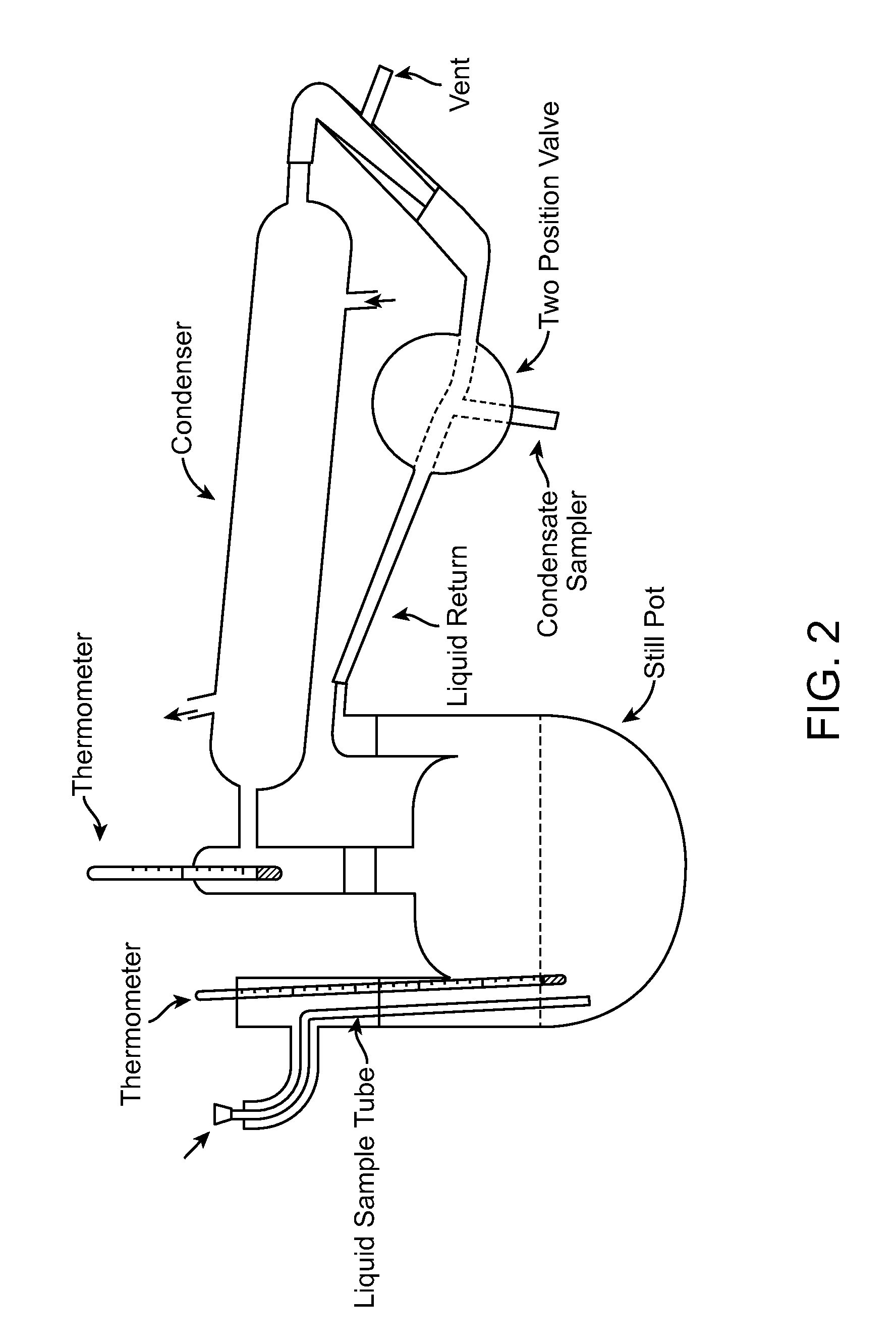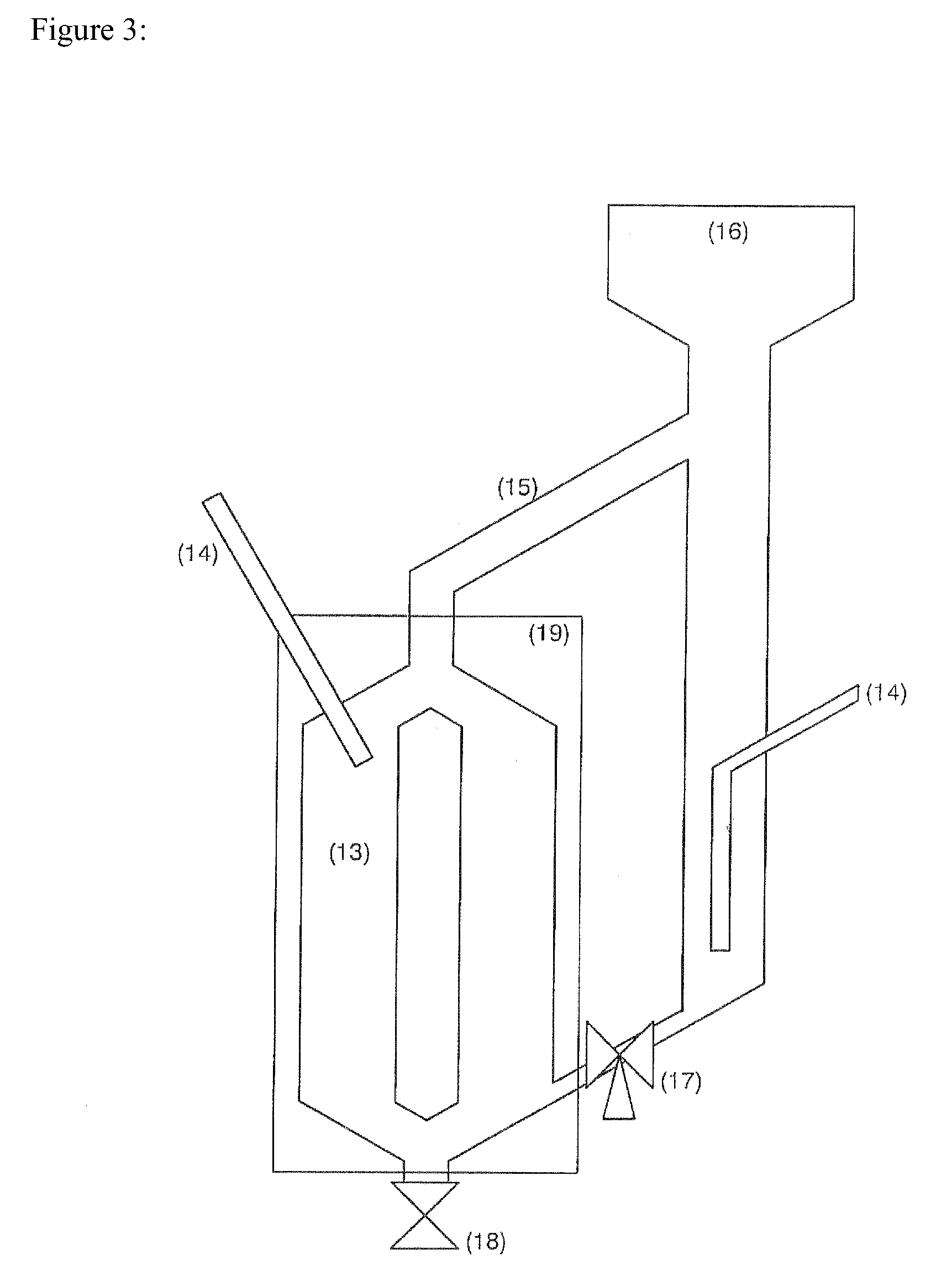Process for the production of acetic acid
a technology of acetic acid and process, which is applied in the field of manufacture of acetic acid, can solve the problems of large amount of water, complex underlying chemistry, and increase the formation of hydrogen iodid
- Summary
- Abstract
- Description
- Claims
- Application Information
AI Technical Summary
Problems solved by technology
Method used
Image
Examples
example 1
General Procedure A
[0151]500 grams of a solution composed of 12 wt. % water, 3.8 wt. % hydrogen iodide and 84.2 wt. % acetic acid was charged to the Apparatus 1 flask. As described above, the water concentration in the flask was decreased from 12 wt. % to about 5 wt. % in increments of about 0.5 wt. % by removal of aliquots of condensed vapor sample and replenishing the flask with a similar volume of acetic acid. The water and iodide concentration of the condensed vapor sample and of the pot solution were determined after each removal, thus allowing the mole fractions of all components to be calculated. The results are depicted in FIG. 4 which shows a rapid increase in hydrogen iodide in the vapor phase as water concentration in the pot is lowered.
example 2
[0152]500 grams of a solution composed of 12 wt. % water, 3.8 wt. % hydrogen iodide, 13.0 wt. % triphenylphosphine oxide and 71.2 wt. % acetic acid was charged to Apparatus 1 and an experiment conducted as described in Example 1. The results are depicted in FIG. 4 which shows that in the presence of triphenylphosphine oxide, there is very little hydrogen iodide in the vapor phase compared to Example 1.
example 3
[0153]500 grams of a solution composed of 12 wt. % water, 3.8 wt. % hydrogen iodide, 13.0 wt. % lithium iodide and 71.2 wt. % acetic acid was charged to Apparatus 1 and an experiment conducted as described in Example 1. The results are depicted in FIG. 4 which shows that in the presence of lithium iodide, there is a rapid increase in hydrogen iodide in the vapor phase, even when there remains a high mole fraction of water in the liquid phase.
PUM
| Property | Measurement | Unit |
|---|---|---|
| temperature | aaaaa | aaaaa |
| temperature | aaaaa | aaaaa |
| pressure | aaaaa | aaaaa |
Abstract
Description
Claims
Application Information
 Login to View More
Login to View More - R&D
- Intellectual Property
- Life Sciences
- Materials
- Tech Scout
- Unparalleled Data Quality
- Higher Quality Content
- 60% Fewer Hallucinations
Browse by: Latest US Patents, China's latest patents, Technical Efficacy Thesaurus, Application Domain, Technology Topic, Popular Technical Reports.
© 2025 PatSnap. All rights reserved.Legal|Privacy policy|Modern Slavery Act Transparency Statement|Sitemap|About US| Contact US: help@patsnap.com



